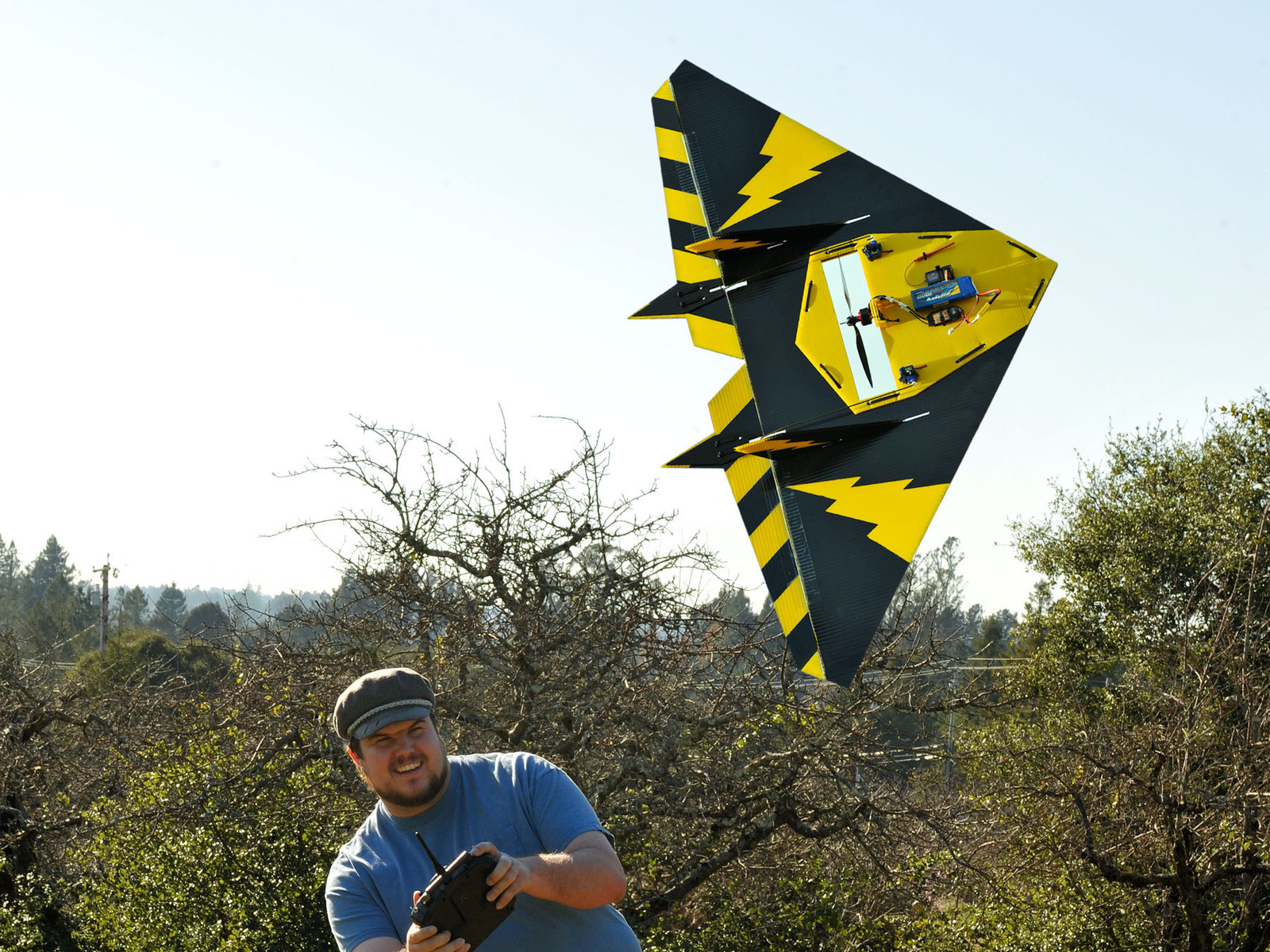Conclusion
Have Towel, Will Travel
Know Your Controls
Throttle: The transmitter’s left stick is the throttle: push it forward to go faster, pull it backward to go slower.
The transmitter’s right stick operates the elevons as follows:
- Pitch: Elevator signal determines the plane’s up/down attitude, or pitch. Pull the stick back to angle the nose up (both elevons go up), and push it forward to nose down (both elevons go down). It’s the reverse of a game controller.
- Roll: Aileron signal determines the plane’s roll to the left or right. (It’s not really left and right turning — that’s yaw, and the Towel doesn’t use the rudder signal.) Push the stick left to roll the plane left (raise the left elevon and lower the right elevon). Push it right to roll right (raise the right and lower the left elevon).
Elevon mixing: If your radio supports elevon mixing, follow the manual to achieve it. An onboard elevon mixer, aka V-tail mixer, should also provide instructions; it’s shown here (inset) connected but not yet zip-tied in place.
Control throws: The beginner-level control throws are ±¾” in both pitch and roll. If you know how to fly, then double that. Adjust the throws by either using dual rates on your transmitter or moving the servo horn holes inward (reduce throw) or outward (increase throw).
Flight School
A well-built Towel takes damage like a B-17 bomber takes flak — if the motor’s still turning, then it’s flying. A few tips for successful flight:
CG and trim: The plane built for this article flew perfectly with the trim and center of gravity shown here. Get this right – it’s critical.
Launching: I launch the plane with my left hand, while my right thumb keeps constant contact with the right stick. I run up the throttle with my chin, up to about two-thirds throttle, and release smoothly into the air. I do not throw the Towel, nor do I drop it. It’s an easy, straight toss. Since my thumb is on the elevon controls, it’s easy to correct wind disturbances and “off” launches.
Flight training: If you’re a newbie, we recommend the Splinter Method of flight training. This is best done over deep grass in a big field with nothing to hit.
- Have someone else launch the plane with 50% power. The pilot’s job is to keep the wings and nose level and cut throttle before the plane settles into the ground, which it should do in a few feet at 50%.
- Once that’s working well, increase power to 75%. Fly the plane straight for 50 feet and land it by cutting throttle. Repeat until this is smooth.
- The pilot then launches their own plane at 75% power for a 50-foot flight. No turns!
- Once comfortable with launching and landing, the pilot will attempt to turn 180° and then land. Any sign of trouble and the immediate reaction is to cut throttle and keep the nose level. You should note that when the Towel flies at you, the left and right controls are reversed! Flight simulator time will really help with this.
- The pilot will then attempt a 360° turn and landing.
- Now the pilot can attempt figure-eights and further skill building.
Flight time: Standard battery packs in the range suggested will last 6–7 minutes, and take about 25 minutes to charge. Not all speed controllers have reliable automatic cutoffs for low voltage, so be mindful.
With that said — fly your Towel, send us a picture at http://brooklynaerodrome.com, make something different, improve upon the design, and share your build at makeprojects.com.
This project first appeared in MAKE Volume 30, page 82.



